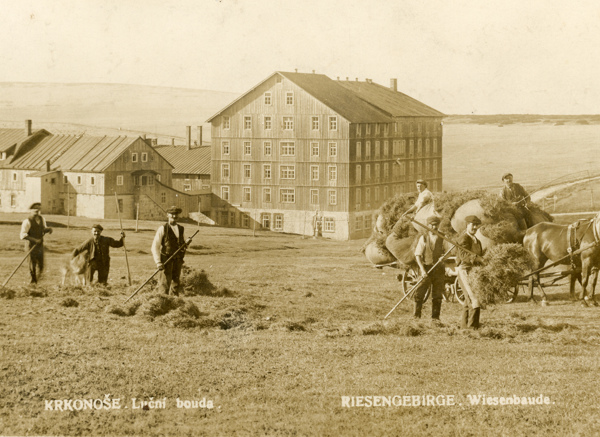There is an increased risk of spontaneous fall of branches and trees throughout the National Park, where the laws of nature govern the formation and termination of trees. Enter the forest at your own risk!
For more than eight centuries, man has been interfering in the natural development of the Krkonoše Mountains, trying to make use of all the natural resources that the mountains provide.

The initial phase of settlement in the foothills of the Krkonoše Mountains in the 12th to 14th centuries was replaced by the medieval exploitation of mineral wealth, especially iron, copper, arsenic and silver ores. The medieval mining and metallurgical business started the rapid development of the Krkonoše settlements.
Glassmaking (16th-17th centuries) was of great importance in the settlement of the Krkonoše region. However, the mining of minerals and the production of glass led to the spontaneous exploitation of the mountain forests. The end of logging and the transfer of logging to the neighbouring mountains heralded the transition of the highlanders to agriculture and building, to cattle grazing and hay harvesting.
The herdsman huts style of farming period (17th-19th centuries) significantly changed the face of the Krkonoše Mountains (creation of permanently forest-free enclaves) and gradually led to the development of tourism. This boomed especially at the turn of the 19th and 20th centuries and its disproportionate growth resulted in significant damage to the nature and landscape of the Krkonoše.
The threat to natural values led wise and prudent people to gradually introduce a series of conservation measures, culminating in the designation of national parks on both sides of the Krkonoše Mountains in 1959 (Karkonoski Park Narodowy) and 1963 (Krkonoše National Park).